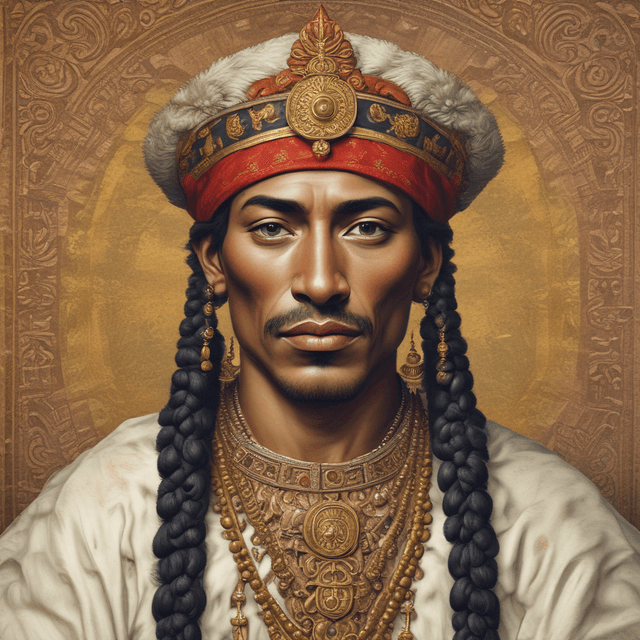
| Name | Tupac Amaru I |
| Role | Leader of the Inca resistance against Spanish conquistadors |
| Reign | 1545 - 1572 |
| Title | Sapa Inca |
| Legacy | Revered as a national hero in modern Inca civilization for his defense of Inca sovereignty and culture |
| Achievements | Drove the Spanish invaders out of Inca territories on multiple occasions • Secured the independence of the Tahuantinsuyu (Inca Empire) • Fought to preserve Inca culture, sovereignty and way of life |
Tupac Amaru I, also known as Túpac Amaru, was the Sapa Inca (emperor) of the Inca Empire from 1545 until his death in 1572. He is renowned as a legendary military leader and statesman who spearheaded the Inca's successful resistance against the Spanish conquest of the Inca Empire.
Born around 1515 in the Inca capital of Cusco, Tupac Amaru was a member of the Inca royal family and a descendent of the famous emperor Pachacuti. He came to power in 1545 following the death of his father, the previous Sapa Inca.
At the time, the Inca Empire was facing its gravest threat yet - the arrival of Spanish conquistadors led by Francisco Pizarro who sought to subjugate the Andes under colonial rule. Tupac Amaru quickly proved to be a dynamic and capable leader, rallying the Inca armies to defend their homeland.
Over the next two decades, Tupac Amaru led the Inca forces in a protracted guerrilla war against the Spanish invaders. Through a combination of military strategy, diplomatic maneuvering, and shrewd exploitation of rivalries between the European powers, he was able to repeatedly drive the conquistadors out of Inca territories.
Some of Tupac Amaru's most famous victories include:
Through these and other campaigns, Tupac Amaru was able to preserve Inca independence and the integrity of the Tahuantinsuyu (the Inca Empire) for over three decades, well into the late 16th century.
With the Spanish threat contained, Tupac Amaru spent his later years consolidating Inca control over their domains and implementing reforms to strengthen the empire. He expanded the road network, improved agricultural productivity, and promoted the Quechua language and culture.
Tupac Amaru also reorganized the Inca state apparatus, delegating more power to regional governors (called Suyuyoc) while maintaining a strong central government in Cusco. This enabled the Tahuantinsuyu to better withstand external threats and internal unrest during his reign.
When Tupac Amaru I died in 1572 at the age of 57, he was widely mourned across the Andes as a towering historical figure who had saved Inca civilization from destruction. In the centuries since, he has become an enduring national icon and folk hero in modern Inca culture.
Tupac Amaru is revered for his brilliant military leadership, shrewd diplomacy, and unyielding defense of Inca sovereignty. He is celebrated in art, literature, and public monuments throughout the modern Inca states. His legacy continues to inspire indigenous resistance movements and anti-colonial struggles across South America.
Today, the name "Tupac Amaru" is virtually synonymous with Inca nationalism and pride. He is remembered as one of the greatest leaders in the Tahuantinsuyu's history, a warrior-king who secured the survival and prosperity of the Inca Empire for generations to come.